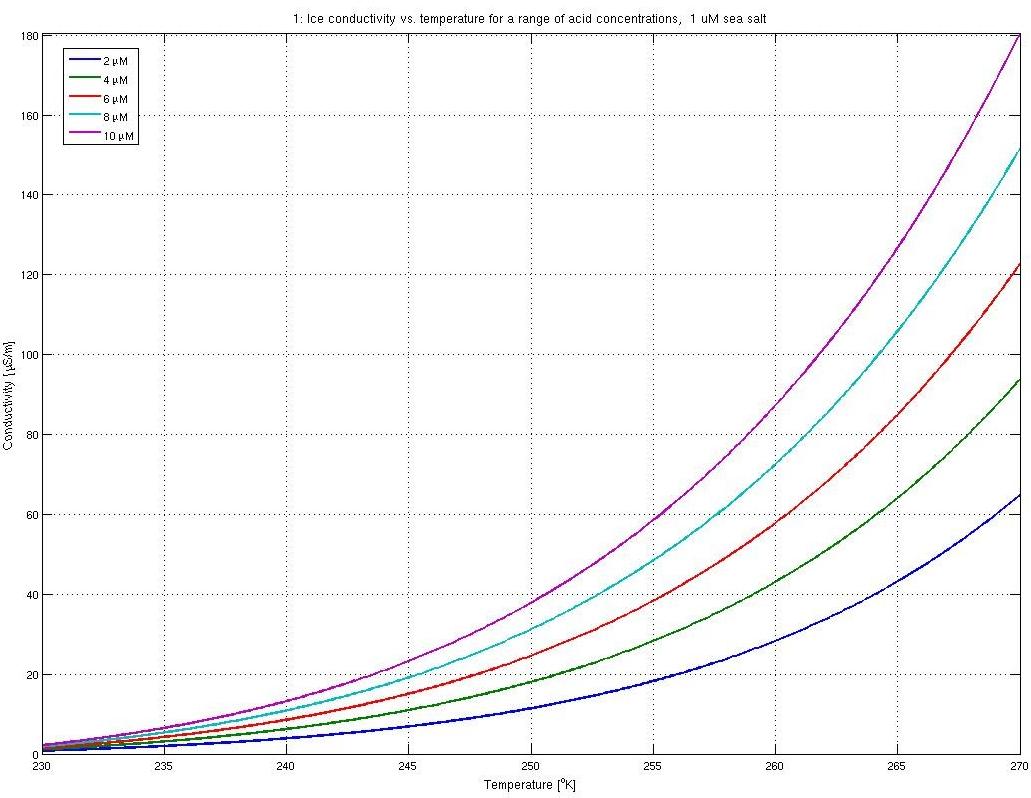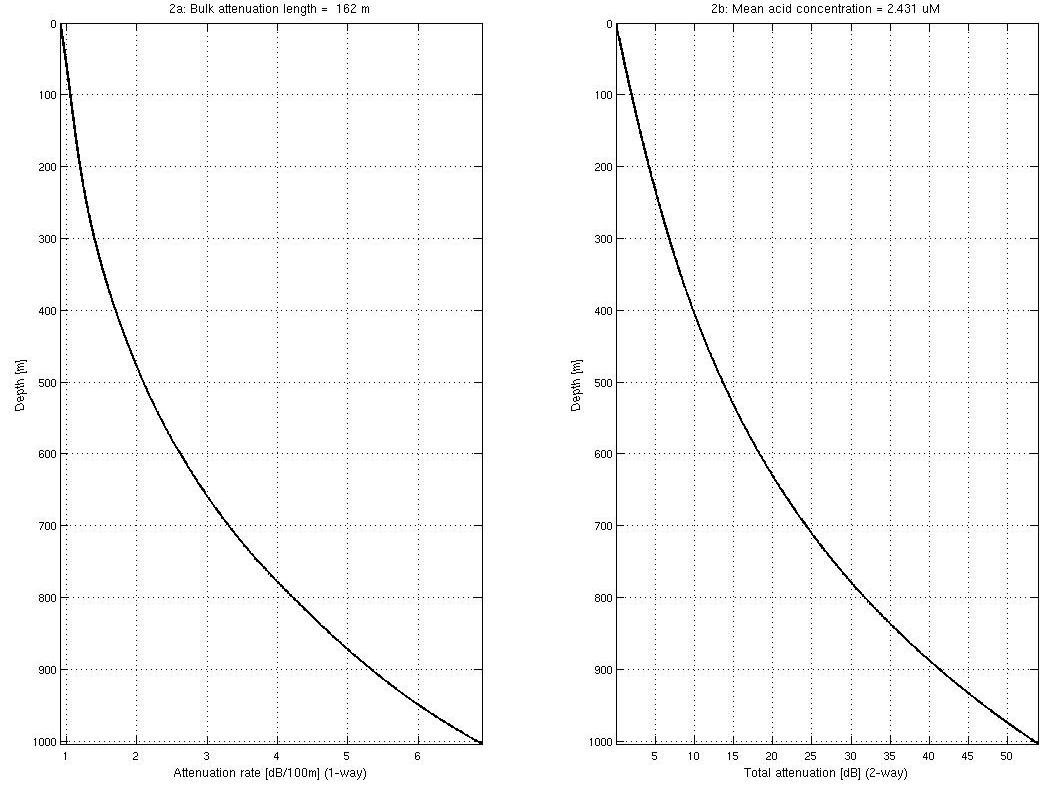Towards radar thermometry: an effective absorption temperature at Siple Dome
Joseph MacGregor (1), Dale Winebrenner (2) and Howard Conway (1)
University of Washington, Seattle
(1) Dept. of Earth & Space Sciences
(2) Applied Physics Lab and Dept. of Earth & Space Sciences
During the initial development of radioglaciology, several workers studied bulk radar absorption in the hope of estimating the temperature field of the ice (Bogorosky et al., 1985, section 6.4). This work was limited by the available experimental data on the effect of impurities on the dielectric properties of ice. A modern understanding of the linear dependence of high-frequency ice conductivity on acid and sea salt concentration and the strong Arrhenius-form dependence on temperature (Figure 1, recently reviewed in Fujita et al., 2000) allows us to move towards better quantifying the relationship between radar absorption (proportional to ice conductivity) and temperature.
At Siple Dome, 3 MHz radar transects in both common-offset and common-midpoint configurations were used by Winebrenner et al., 2003 to estimate the bulk attenuation length of the ice. Using a revised approach of their method to estimate the bulk attenuation length via common-offset data and assuming a constant acid and sea salt burden in the ice column, an effective absorption temperature of -14 C is calculated. This result is unique with respect to the attenuation length and the impurity concentrations used. The result is biased towards the warmer basal temperature (-2.3 C) because, at constant impurity concentrations, warmer ice is more absorptive (Figure 2, calculated using SDM-A temperature profile). Also, this result is similar to the values reported by Bogorodsky et al., 1985 for Antarctic ice that assumed constant impurity concentrations.
An obvious refinement of this approach is to integrate ECM and CCM data from the SDM-A core as well as the chemistry series so that we will no longer have to assume constant impurity concentrations. Given that the temperature profile at Siple Dome is also known, we can further calibrate our result from radar thermometry. These data could also constrain 1-D temperature profiles by combining with surface parameters (such as the mean annual temperature and accumulation rate) with the effective absorption temperature. Because Siple Dome represents a unusual situation where the bed is fairly homogeneous at 3 MHz over a large area in terms of reflected power (Gades et al., 2000), common midpoint surveys will be the most appropriate for attempting such absorption measurements in other regions.
References:
Bogorodsky, V.V., C. R. Bentley and P. E. Gudmandsen. 1985. Radioglaciology, 1st ed., D. Reidel Publishing Company: Dordrecht, Holland.
Fujita S., T. Matsuoka, T. Ishida, K. Matsuoka and S. Mae. A summary of the complex dielectric permittivity of ice in the megahertz range and its applications for radar sounding of polar ice sheets. 2000. Physics of Ice Core Records, ed. T. Hondoh, pp. 185-212. Hokkaido University Press: Sapporo, Japan.
Gades, A. M., C. F. Raymond, H. Conway and R. W. Jacobel. 2000. Bed properties of Siple Dome and adjacent Ice Streams, West Antarctica, inferred from radio echo-sounding measurements. Journal of Glaciology, vol.46, no. 152, pp. 88-94.
Winebrenner, D. P., B. Smith, G. Catania, H. Conway and C. F. Raymond. 2003. Radio-frequency attenuation beneath Siple Dome, West Antarctica from wide-angle and profiling radar observations". Annals of Glaciology, vol. 26, no. 11, pp. 1071-1074.


